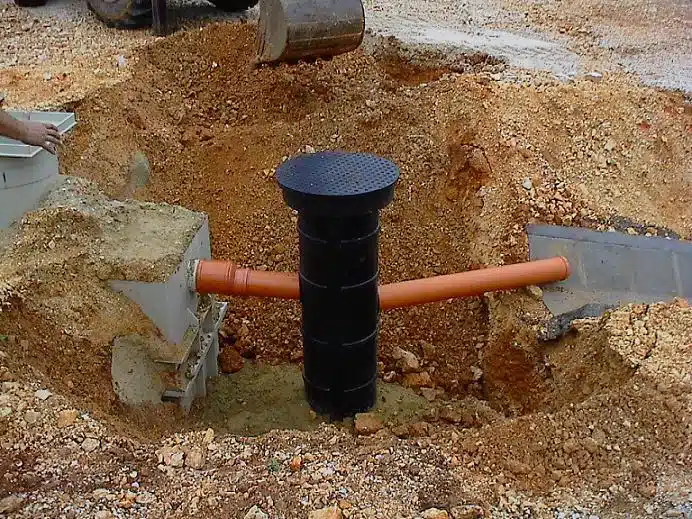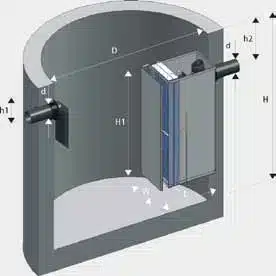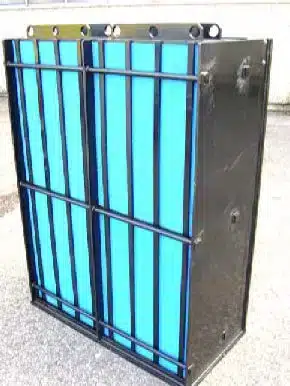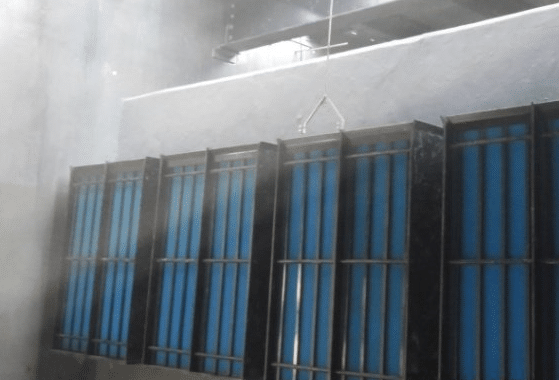In North Carolina, protecting subsurface groundwater is a top priority. Do you know about the strict rules for below ground oil water separators (OWS)? These systems are key to keeping our water safe. Let’s explore how North Carolina Below Ground OWS are making a difference.
Below Ground Oil Water Separators are vital in North Carolina’s fight against water pollution. They separate oil from water, making sure clean water goes back into the environment. Thanks to advanced technology, modern OWS can separate much better than old systems, helping businesses and industries with oil-contaminated water.
North Carolina has tough rules for water quality. Companies like Freytech Inc. offer top-notch Below Ground OWS that go beyond these rules. These systems can separate oil from water as efficiently as 5 PPM, which is way better than the limit set by North America.
Key Takeaways
- North Carolina Below Ground OWS are crucial for environmental compliance
- Advanced OWS systems can achieve separation efficiencies of 5 PPM or lower
- Below Ground Oil Water Separators protect subsurface groundwater
- State-of-the-art OWS technology surpasses standard environmental regulations
- Efficient OWS systems can handle various types of hydrocarbons
Understanding Below Ground Oil Water Separators in North Carolina
Below Ground OWS systems are vital in North Carolina for protecting the environment. They keep oil and water apart, stopping oil from polluting important water sources. Let’s look into their role and the rules they must follow in the state.
Definition and Purpose of OWS Systems
These systems are made to catch and separate oil from wastewater. They keep storm drains and sewer systems free from oil. This is key to keeping our water clean and our aquifers safe from pollution.
Importance in Environmental Protection
OWS systems are crucial for keeping North Carolina’s water clean. They catch oil and other pollutants before they can get into our water. This helps keep our ecosystems healthy and our drinking water safe.
North Carolina Regulations and Compliance
North Carolina has strict rules for Below Ground OWS systems. These rules make sure the systems are designed, installed, and worked properly. To follow these rules, regular water quality tests are needed, and they must meet state and federal standards. The North Carolina Department of Environmental Quality makes sure these rules are followed to protect our water resources.
Key Components of Below Ground OWS Systems
Below Ground Oil Water Separators are complex systems designed to protect the environment. They have several crucial parts that work together to remove oil from water effectively.
Inlet Compartment and Diffuser
The inlet compartment is where water first enters the system. It has a diffuser that spreads the incoming water evenly. This part helps slow down the flow and starts the separation process.
Separation Chamber with Coalescing Plates
The separation chamber is the heart of Below Ground Oil Water Separators. It contains coalescing plates that catch tiny oil drops. These plates can remove oil particles as small as 20 microns. This step is key for meeting strict water quality rules.
Oil Storage Area and Clean Water Compartment
After separation, oil moves to the storage area. Clean water flows to its own compartment. This design ensures that only clean water leaves the system. Regular water table monitoring helps check if the separator is working right. Some systems have leak detection between double walls for extra safety.
Proper design of these components is crucial. It often requires hydrogeological surveys to understand local conditions. This careful planning helps Below Ground Oil Water Separators protect our water resources effectively.
North Carolina Below Ground OWS: Design and Installation
North Carolina’s Below Ground OWS systems are made to follow API 421 standards. They are key in stopping groundwater pollution and helping with cleanup methods. These systems can handle flow rates from 35 to 3000 GPM and store up to 19,000 gallons.
They come with rectangular access manholes for easy upkeep and have fittings for venting and pump-outs. The outside gets sandblasted and coated for long-lasting use. If the soil is very acidic or near saltwater, there’s an option for inside protection against rust.
Putting in Below Ground OWS systems needs a lot of planning. It’s important to pick the right size to manage the expected water flow. You also need to check the soil to avoid settling or shifting. The system must meet UL58 and UL1746 standards for building and rust protection.
If you’re drilling wells nearby, you might need extra steps. Adding grit chambers helps with high solid content. Hold-down straps can also be added for extra stability in places with high water levels or flooding.
Performance Standards and Efficiency
Below Ground Oil Water Separators (OWS) in North Carolina set high standards for performance and efficiency. They are key to keeping water clean and supporting cleanup efforts.
Separation Efficiency and PPM Ratings
Freytech’s Below Ground OWS systems in North Carolina have impressive separation efficiency ratings of 5 PPM or less. This means they remove oil from wastewater very well, making the water cleaner. They can take out oil droplets as small as 20-30 microns, showing their advanced water treatment skills.
Compliance with CEN EN 858-1
North Carolina’s Below Ground OWS systems follow the tough CEN EN 858-1 standards. This ensures they meet top-notch quality, giving reliable performance in many places. Their design lets them separate oil and solids well, making them smaller and more efficient than old-style separators.
Handling Various Hydrocarbon Types
These advanced OWS systems can handle many kinds of hydrocarbons. They work well with motor oil, diesel, gasoline, and jet fuel, among others. This makes them perfect for various uses in North Carolina, helping with water testing and cleanup. Their better performance also means they’re cost-effective for businesses, helping protect the environment.
These separators are crucial in storm water systems. They process runoff to meet the US EPA’s Clean Water Act standards. With effective oily water treatment, facilities protect the environment and dodge big fines.










